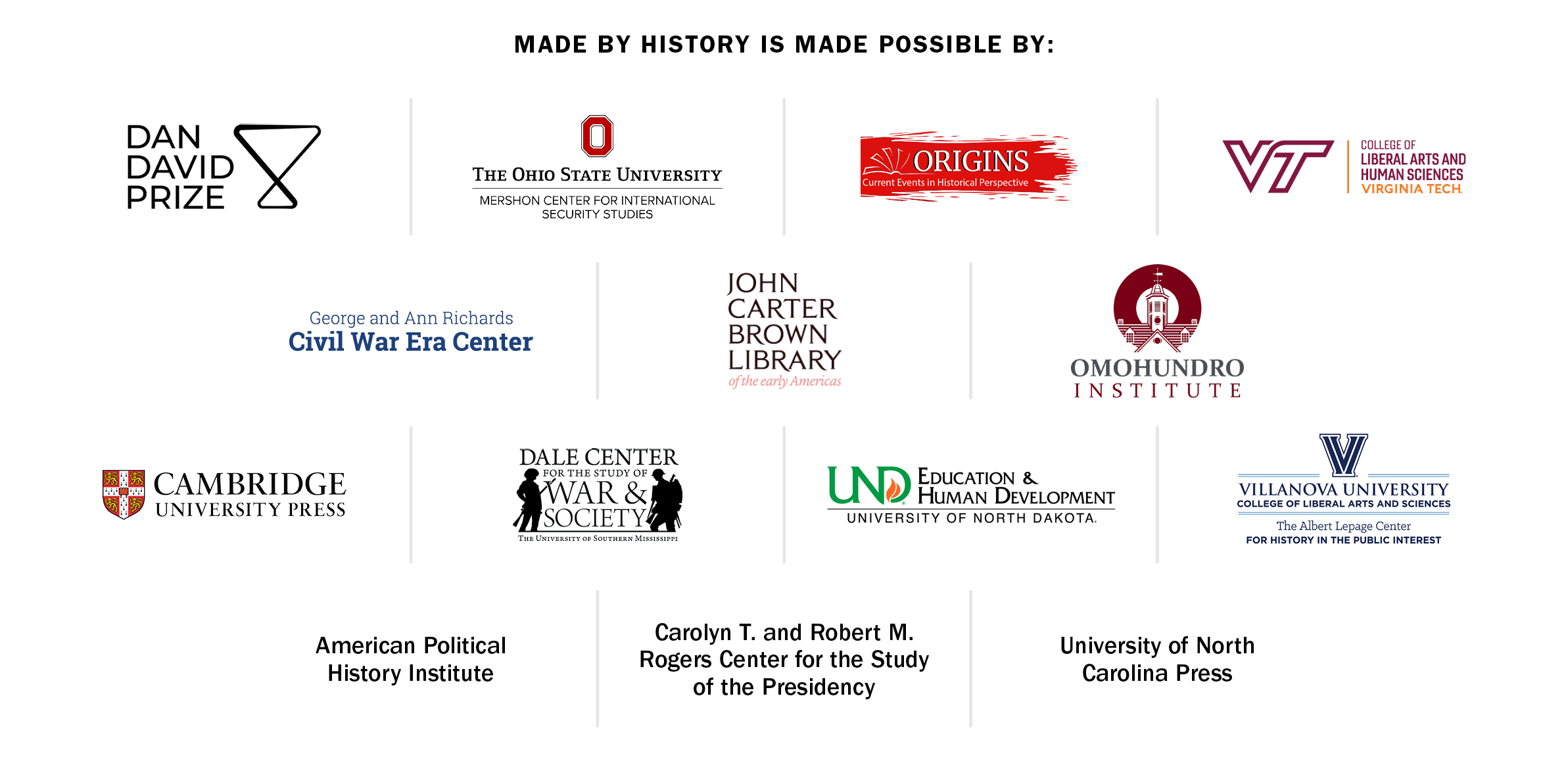By any measurement, this year's St. Patrick's Day in Washington, D.C., will be historic. On March 17, political leaders from both Northern Ireland and the Republic of Ireland will make their annual pilgrimage to the nation's capital to mark the holiday. The former, most notably, will be represented by the newly appointed First Minister, Michelle O'Neill — the first Irish nationalist political leader of Northern Ireland since the creation of partition in 1921 — and deputy First Minister Emma Little-Pengelly. On the agenda will be the recent reestablishment of a power-sharing government in Northern Ireland and, with Sinn Fein’s expectant rise to political power in the Republic of Ireland within the next year, the potential for a referendum on Irish reunification within a decade.
The “shuttle diplomacy” of political leaders from Belfast and Dublin to Washington has come under heavy scrutiny this year, as critics of the Irish government have commented on the “shammockery” of their politicians enjoying the “festivities” at the White House, while the U.S. supports Israel’s war in Gaza, which is unpopular in Ireland. Meanwhile, the leaders of the opposition in Northern Ireland have caricatured the annual St. Patrick’s Day activities in Washington as a grand social occasion complete with “champagne and canapés,” but lacking political import.
History, however, tells us otherwise. This year marks a century of U.S.-Irish diplomatic relations. At critical junctures over the last 100 years, the presence of Irish political leaders in Washington, along with their American allies, has been of capital importance in the resolution of the recurrent conflicts in British-Irish relations, particularly over the constitutional status of Northern Ireland — the “Irish Question.”
Consider the events that led to the creation of the Irish State. On Jan. 21, 1919, members of the Sinn Féin party (from which modern-day Sinn Féin claims political lineage) abstained from attending the British parliament, instead establishing a revolutionary assembly at the Mansion House in Dublin: Dáil Éireann. The British administration began suppressing the new Irish assembly in September 1919, enabling it to meet just three times in 1920 and on four occasions in 1921. British forces imprisoned members of the Dáil as they sought to defeat the violent uprising of Irish nationalists.
Confronting censorship and military repression, Irish leaders crossed the Atlantic to take advantage of the political and press freedoms offered in Washington. There they found friends in high places. The potential strength of the Irish vote in American politics prompted politicians in both parties to consider supporting the Irish cause.
Read More: Biden's Visit to Northern Ireland Highlights the Complicated Legacy of the Good Friday Agreement
In 1919, the Friends of Irish Freedom, an influential Irish-American political group, secured hearings on Irish self-determination as part of the Senate Foreign Relations Committee deliberations over the League of Nations. One year later, the well-connected Irish-American William Maloney formed a Commission on Conditions in Ireland to investigate British atrocities. The commission included members of Congress, public intellectuals, and media figures. Members of the Dáil were invited to address the commission and the Washington Post printed their testimony each day.
The American embrace of the Irish cause forced British Prime Minister David Lloyd George to concede that, “In the interests of peace with America,” Britain “ought to try to get a settlement.” In 1921, that sentiment contributed to a truce between British and Irish armed forces which led to the signing of the Anglo-Irish Treaty — creating an independent Irish state.
Irish independence did not end the U.S.’s role in the island’s politics. On Oct. 7, 1924, the U.S. became the first country to formalize diplomatic relations with Ireland independent of the U.K. when President Calvin Coolidge invited T.A. Smiddy to present his credentials as Ireland’s envoy extraordinaire and Minister Plenipotentiary to the U.S. Four years later, W.T. Cosgrave undertook the first Irish state visit to Washington. He dined at the White House, addressed the Senate, and held talks with Secretary of State Frank B. Kellogg.
Six months later, independent Ireland signed its first multilateral agreement — the Kellogg-Briand Pact — outlawing war as an instrument of national policy.
Relations between Ireland and Britain stabilized over the next two decades, necessitating fewer visits from Irish statesmen to Washington.
In 1964, however, the Unionist Prime Minister of Northern Ireland, Terence O’Neill, marked St. Patrick’s Day with a visit to D.C. He remarked to President Lyndon B. Johnson that “as relations between the North of Ireland and the South of Ireland improve, I do so hope that the Irish Question can be removed from American politics.”
Instead, the Troubles began, causing 30 years of bitter conflict in Northern Ireland, and direct rule from London. In the absence of a functioning democracy in Belfast, Irish-American political leaders held British rule in Northern Ireland to account in Washington. The “Four Horsemen” — Massachusetts Senator Ted Kennedy, New York Senator Pat Moynihan, House Speaker Tip O’Neill, and New York Governor Hugh Carey — issued annual St. Patrick’s Day statements to the media spotlighting the violence in Northern Ireland and founded the Friends of Ireland to offset British influence in Congress. In 1977, they persuaded President Jimmy Carter to issue the first statement from the Oval Office signaling American interest in resolving the conflict in Northern Ireland.
Working in tandem with these allies, Irish leaders used the social spaces of D.C. political life to inculcate their views on the conflict in the American political class. John Hume, the leader of the nationalist SDLP (and future Nobel Peace Prize Laureate), impressed upon guests at Georgetown dinner parties — among them White House staffers and members of the National Security Council — the need for a cross-community political solution in Northern Ireland. Famously, Hume would brief Kennedy on events across the Atlantic during “moonlight tours” of the National Mall during the 1980s. Hume’s ideas for a peaceful solution to the Troubles were so widely discussed on the Senate floor that he became known as the “101st Senator.”
O’Neill also held annual St. Patrick’s Day Lunches, which offered another opportunity to advance the Irish cause. At the 1984 lunch, Hume’s congressional allies lobbied President Ronald Reagan to persuade British Prime Minister Margaret Thatcher to grant the Irish Government in Dublin an advisory role in Northern Ireland for the first time — leading to the Anglo-Irish Agreement one year later. “It was a mistake that Unionism did not recognize earlier the importance of that influence,” Democratic Unionist Party leader Sir Jeffrey Donaldson later observed, “we needed to be on the Hill, we needed to be in Washington.”
Read More: An Irish Nationalist Will Lead Northern Ireland's Government for the First Time
Eventually devoting this attention to Washington proved integral to achieving a peaceful solution to the conflict in Northern Ireland. In 1994, over the protests of the British Foreign Office, President Bill Clinton enabled Sinn Féin leader Gerry Adams to visit the U.S. The trip led to a ceasefire in Northern Ireland.
In 1995, Clinton dispatched former Senate Majority Leader George Mitchell to chair peace talks in Belfast. The talks progressed over three years, and as negotiators neared an agreement in 1998, Clinton called Adams and Ulster Unionist Party leader David Trimble during late night bargaining sessions, which proved to be instrumental in both signing the Good Friday Agreement.
But peace did not end the role of American politicians in Irish politics. The stunning British departure from the European Union (Brexit), for example, created new uncertainty in 2016. The D.C.-based Ad Hoc Committee on Northern Ireland (of which I am a member) mobilized to lobby members of Congress on both sides of the aisle to protect the terms of the Good Friday Agreement.
This history is quite clear: 100 years after the U.S. established formal diplomatic relations with Ireland, the presence of Irish political leaders in Washington, in conjunction with the work of American allies, remains crucially important in Irish politics. Each March, the two sides discuss trade, higher education, and tourism.

Washington’s political culture remains a potential catalyst for political change in Ireland, north and south. Little-Pengelly and the Irish Taoiseach Leo Varadkar are notable alumni of the Washington Ireland Program, an initiative which brings promising young students from both nationalist and unionist communities to Washington to develop their leadership skills through internships at political and cultural institutions. This integrated political education of the Good Friday Agreement generation in D.C. offers new promise for peace and prosperity on the island.
History has shaped the significance of Irish political visits to Washington. It indicates that this St Patrick’s Day, to quote poet Seamus Heaney (care of President Biden), hope and history may rhyme once again.
Darragh Gannon is associate director of global Irish studies at Georgetown University. His most recent book is Conflict, Diaspora, and Empire: Irish nationalism in Britain, 1912-1922 (Cambridge University Press, 2023).
Made by History takes readers beyond the headlines with articles written and edited by professional historians. Learn more about Made by History at TIME here. Opinions expressed do not necessarily reflect the views of TIME editors.
More Must-Reads from TIME
- L.A. Fires Show Reality of 1.5°C of Warming
- Behind the Scenes of The White Lotus Season Three
- How Trump 2.0 Is Already Sowing Confusion
- Bad Bunny On Heartbreak and New Album
- How to Get Better at Doing Things Alone
- We’re Lucky to Have Been Alive in the Age of David Lynch
- The Motivational Trick That Makes You Exercise Harder
- Column: All Those Presidential Pardons Give Mercy a Bad Name
Write to Darragh Gannon / Made by History at madebyhistory@time.com
